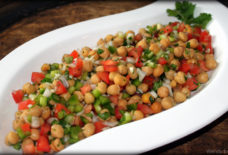Khajur Burfi- A Dessert Symbolizing the Arab and Indian Spice Trade
By: Blanche Shaheen / Arab America Contributing Writer
While Arab food and Indian food have distinct differences, their ancient past reveals a common thread shared by their love of spices. According to historical texts, both India and the Arab world shared a love for spices for cooking, food preservation, medical purposes, and even ointments and perfumes.
Initially, the spice trade from Asia was carried out by camel caravans through the Arabian desert. But this network of trade expanded along the Silk Road and the Incense Trade Route which spanned both land and sea, connecting Asia, India, and the Mediterranean. The Incense trade route, in particular, thrived from the 7th century BC to the 2nd century CE.
The luxury goods and the aromatics from India created a lot of wealth for the Arabian Kingdom. Spices like black pepper, cinnamon, turmeric, and cardamom are indigenous to India and have been used there for thousands of years. These spices and other aromatics were shipped through Oman to the Southern Arabian coast. The caravans then carried aromatics and spices to the kingdoms of Palestine, Yemen, and finally even to Gaza.
By the middle of the 8th century, Muslim missionaries became spice traders, particularly in the city of Basra at the point where the Tigris and Euphrates rivers met in the Persian Gulf. This thriving port served as a trading center for commodities from India, Arabia, Turkey, and Persia. Fast forward to the 9th century, Arab physicians formulated aromatic syrups and flavoring extracts infused with rose, ginger, pepper, nutmeg, cinnamon, saffron, cardamom, and herbs.
India, like many Arab countries, also has an affinity for dates. While Egypt is the world leader in data production and cultivation, India is the largest importer of dates. As Iraq has ramped up production to become the fourth-largest producer of dates, India buys up 79% of the Iraqi crop. It is no wonder that both India and the Arab world love to incorporate dates and warming spices into their desserts.
One Indian dessert that beautifully illustrates the mutually beloved spices and dates of both India and the Middle East is Khajur Burfi. Khajur Burfi is a date and nut roll infused with cinnamon and cardamom, gifted extensively during special occasions and festivals in India. Khajur burfi makes a satisfying dessert without the need for added sugar because it has just the right amount of sweetness, chewiness, crunch, and of course, spice.
In this particular recipe, I also add mahlab, which is the power of St Lucie Cherry. Mahlab gives a fragrant aroma and flavor reminiscent of marzipan and is rich in beneficial Omega 3 fatty acids. While mahlab originated in Turkey and is used in baking extensively throughout the middle east, this spice pairs well with the Indian spices of this confection, but is entirely optional.
While many of the aforementioned spices are ubiquitous in almost every household throughout the Middle East today, Khajur Burfi is a beautiful reminder of the origin of these spices, and a great way to usher in the warm aromas and tastes of fall.
To see a video tutorial of how to make this dessert, click on the video below:
KHAJUR BURFI (DATE AND NUT ROLLS)
1 package, or about 9 ounces of pitted dates
2 tsp coconut oil, divided
1/2 cup whole pistachios
1/2 cup cashews
1/4 tsp Cardamom
1 tsp cinnamon
Dash Ground Mahlab (optional) https://amzn.to/3Cziizz
1/2 cup ground pistachios
Pulse the dates until chopped in the food processor or by hand. Heat 1 tsp of coconut oil in a skillet, and add the whole cashews and pistachios over medium heat. Add the cardamom, 1/2 tsp of the cinnamon, and the optional mahlab. Stir for a couple of minutes until fragrant, then pour into a dish to set aside. In the same skillet, add the 2nd tsp of coconut oil, the dates, and the other 1/2 tsp of cinnamon. Stir over medium heat until well incorporated, about 3 minutes. This will melt down the dates slightly, making it easier to incorporate the nuts. Add the nuts to the dates in the pan, and turn off the heat after one minute. Let the mixture cool for about 10 minutes. Make sure you further combine the ingredients by hand so they are well mixed (see my technique in the video above). Roll into a cylinder on parchment paper, then roll the burfi into the ground pistachios. Twist the parchment paper around the roll, and store it in the refrigerator for at least 2 hours. Roll in foil if storing in the freezer. Cut into slices when ready to serve.
Blanche Shaheen is the author of the cookbook called “Feast In the Middle East, a Journey of Family and Cuisine” which you can order here: https://secure.mybookorders.com/mbo_index.php?isbn=9781545675113 She is also a journalist, and host of the popular cooking show called Feast in the Middle East. She specializes in the Arab cuisine of the Levant and beyond. You can check out her cooking video tutorials at https://www.youtube.com/user/blanchetv Her recipes can also be found at https://feastinthemiddleeast.wordpress.com/
Check out Arab America’s blog here!









